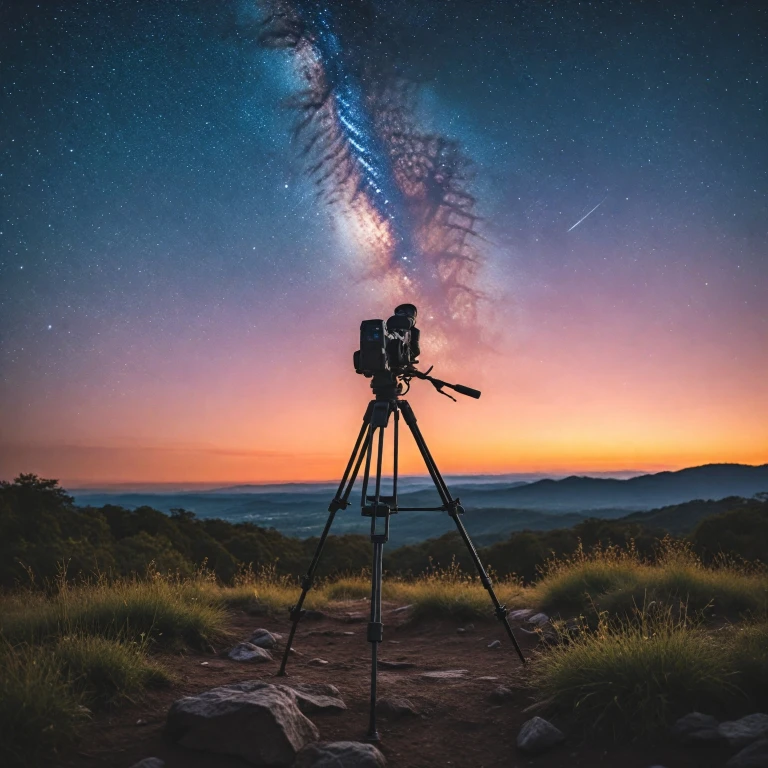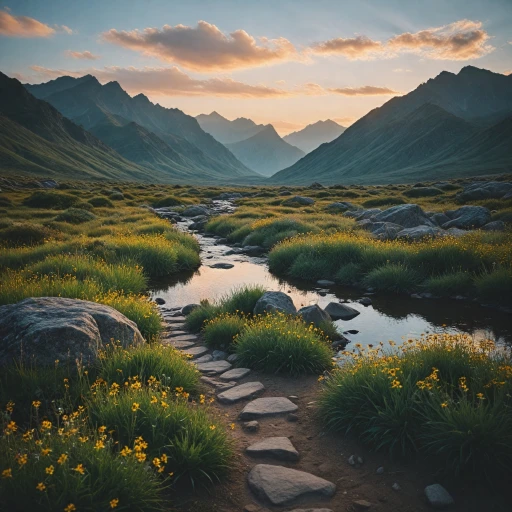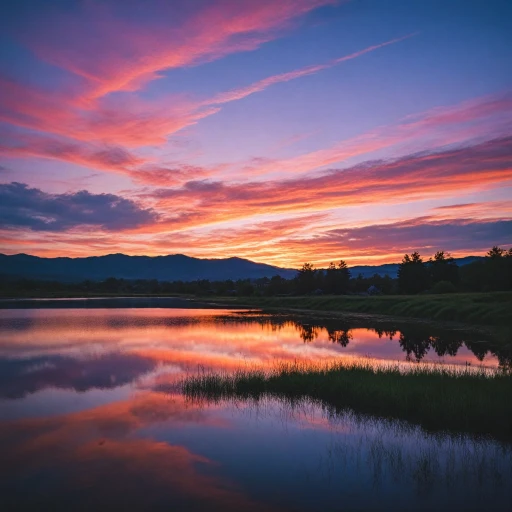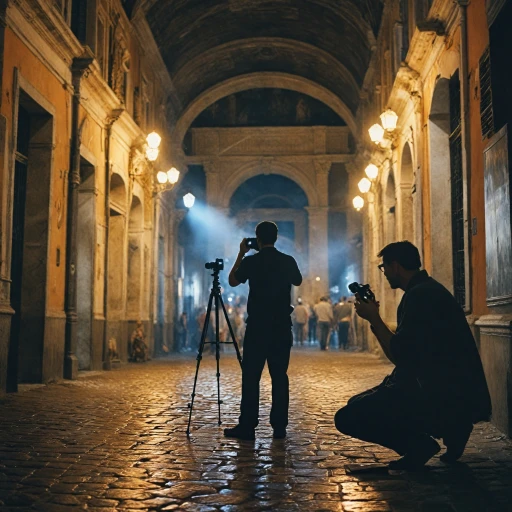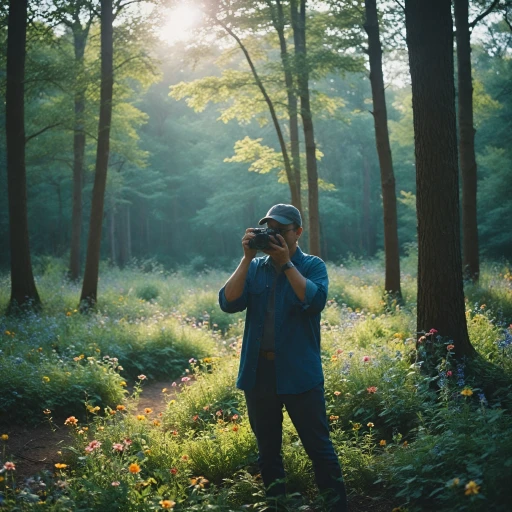Understanding Your Camera's Basic Settings
Getting to Know Basic Camera Functions
Capturing those unique, creative moments in photography often begins with understanding the fundamental camera settings. Grasping these basics sets the stage for experimentation and ensures that every photo you take stands out. Let's dive into these essential settings and how they contribute to crafting images that resonate.
Shooting Modes
Most digital cameras offer a variety of shooting modes that cater to different photography styles and ideas. From automatic to manual, each mode helps you take control of various aspects like aperture, shutter speed, and ISO. Understanding these options allows you to choose the best setting for your subject and environment, enhancing the final image.
Aperture: Control Your Depth of Field
Adjusting the aperture, represented by 'f-stop' numbers, directly affects the depth of field in your photos. A lower f-number allows more light in, creating a shallow depth of field that's perfect for focusing on a specific subject while blurring the background, ideal for street photography or portraits. For landscapes or wide angle shots, a higher aperture brings more of the scene into focus.
Understanding Shutter Speed
Shutter speed is crucial for controlling how motion is captured. A fast shutter speed freezes action, perfect for sports or dynamic scenes, whereas slower speeds create a long exposure effect, capturing light trails or smooth water. More on this in the section on capturing motion.
ISO: Balancing Light and Sensitivity
The ISO setting affects your camera’s sensitivity to light. In low light conditions, a higher ISO can brighten a photo, though it may introduce noise. Proper balance ensures well-lit, clear images, crucial when shooting in low light or indoors without flash. We'll explore this further when balancing light and noise.
Understanding and practicing with these photography fundamentals will not only improve your technical skills but also inspire creative photography. Investing time in learning and experimenting with camera basics sets the foundation for unique and memorable captures.
Playing with Light: Using Aperture for Artistic Effects
Harnessing Light Creatively: Aperture's Artistic Impact
In the realm of photography, light is your most powerful tool, and mastering aperture settings can transform your camera into a paintbrush for images. Aperture, the opening in your lens through which light enters, can dramatically affect how your photos capture light and depth. This camera setting is critical in setting the stage for creating mesmerizing images. Playing with aperture settings allows you to explore a world where sharpness and blurriness dance together in harmony. A wide aperture (small f-number) will give you a shallow depth of field, perfect for emphasizing your subject against a soft, blurred background. This creates a natural light concealment effect, drawing the viewer's focus to the central figure in your photo. Think of portraits or macro photography where highlighting intricate details is key. On the other hand, narrowing the aperture (large f-number) increases the depth of field, ideal for landscape shoots where both the foreground and background should remain in focus. This setting can elevate street photography, offering artistic effects where every element within the frame tells part of a broader story. Experiment with aperture to perfect a technique like the time lapse, where consistent depth is crucial to an even photo sequence. Or explore the artistic potential of double exposure, blending subjects creatively. For those delving into black and white imagery, consider how contrast and texture shift with each tweak of the aperture setting. Creative photography isn't solely about technical know-how; it's a continuous exploration of how settings such as aperture can influence the mood and emotion of an image. As you refine this skill, consider expanding your knowledge with insights on using photography for unique artistic expressions by exploring the fascinating world of aura photography.”}Capturing Motion: Mastering Shutter Speed
Mastering Motion in Photography
Understanding how to manipulate shutter speed is crucial for those looking to take their photography to the next level. Whether you're focusing on street photography or trying to perfectly capture the motion of a sports event, shutter speed is your key ally.
In essence, the shutter dictates how long your camera's sensor is exposed to light, and thus, how motion is captured in your images. A fast shutter speed will freeze a moment in time, allowing you to capture sharp images of moving subjects. On the other hand, a slow speed can convey motion through a creative blur, adding dynamic energy to your photos.
Implementing the right camera settings for motion can lead to incredible creative photography ideas. For instance:
- Long exposure: Use a tripod, set a longer shutter speed, and experiment with capturing light trails from moving vehicles or the smooth flow of water.
- Freeze action: A fast shutter speed is best for capturing the peak action of sports or wildlife.
- Double exposure: Combining two exposures allows for interesting overlaps of motion and stillness.
Finding the best setting may require some experimentation. Begin by trying different speeds, then adjust based on the natural light conditions and the effect you wish to achieve. If you're shooting in low light, increased ISO settings might help, but watch out for noise in your final images. Balancing between various camera settings can enhance your ability to capture stunning images with depth.
For those seeking to capture the perfect moment as the sun sets, understanding how to optimize your camera settings for both light and motion can make a significant difference. Consider enhancing your captures with a graduated neutral density filter for stunning sunsets. Enhancing sunset photography could provide further inspiration in your journey towards creative mastery.
Balancing Light and Noise: The Role of ISO
Finding the Right Balance in Challenging Lighting Conditions
The ISO setting is a pivotal aspect of camera settings, especially when you're looking to shoot in varying lighting situations. It serves to control the sensitivity of your camera's sensor to light, a factor that can be your best ally in creative photography. When natural light is scarce, like in low light or night photography scenarios, an increased ISO setting can enable you to capture details that would otherwise be lost in the darkness.
However, elevating the ISO also introduces a trade-off in the form of image noise, that digital grainy texture that can diminish the quality of your photos. Therefore, finding that sweet spot between light and noise is crucial to produce stunning images without compromising detail.
- In well-lit situations, maintain a lower ISO. This ensures that your photos retain crisp details and a broad depth field.
- When you're faced with challenging lighting, consider gradually increasing your ISO while checking your camera's capability to handle higher noise levels.
Creative Approaches to ISO
Experimenting with ISO allows you to tailor your approach to various photography styles. In street photography, where light conditions can shift rapidly, adjusting your ISO can help you maintain the fluidity of motion without sacrificing clarity.
Similarly, long exposure shots, such as a time lapse or those dreamy long blurs of moving elements, often call for a balanced ISO to maintain a clean appearance. This involves setting your camera to a suitable mode that allows you to manually adjust both ISO and shutter speed to creatively manage the combined effect of both settings on your photos.
Ultimately, mastering the ISO setting will empower you to adapt your shooting techniques to different scenarios, resulting in vivid, detailed, and innovative captures that tell your unique visual story through creative photography.
Creative Techniques: Experimenting with White Balance
Enhancing Colors with White Balance Adjustments
Adjusting the white balance on your camera can have a significant impact on the color tones of your photos. This setting can influence how natural light interacts with your subject, and when done right, you can infuse your images with a creative flair. White balance isn't just about correcting colors; it's about experimenting with hues to achieve artistic outcomes. To start, understand the preset white balance modes available on your camera, such as daylight, cloudy, tungsten, or fluorescent. Each preset is designed to compensate for different lighting scenarios, helping you achieve the best colors possible in your creative photography endeavors.- Daylight: Ideal for standard outdoor shooting during the day. It helps produce balanced colors when the sun casts a natural light on your subject.
- Cloudy: Perfect for overcast days, this mode warms up colors, adding some depth and vibrancy to your photos.
- Tungsten: Used when shooting indoors with incandescent lighting. It cools down the orange tones that such lighting casts on photos.
- Fluorescent: Balances the green tinge that is often associated with fluorescent bulbs, providing a more natural look.
Advanced Tips: Combining Settings for Unique Photos
Enhancing Creativity through Configuration
Achieving compelling and distinctive images often requires you to step outside your standard shooting boundaries. When it comes to creative photography, embracing a mix of camera settings can lead to unforgettable visual stories. Mastering the blend of aperture, shutter speed, and ISO is a step toward unlocking the realm of expressive photography.- Depth and Drama with Aperture and ISO: Experimenting with aperture can dramatically change your image's depth of field. Pairing the correct ISO setting can keep your subjects vibrant even in low light.
- Dynamic Motion Effects: To capture motion uniquely, play with varying shutter speeds. Whether you’re going for a crisp motion-freeze or a smooth, flowing time lapse, adjusting shutter settings can redefine your image's narrative.
- Explorative White Balance: Adjusting your camera's white balance can add a new layer of creativity. This technique, described in prior sections, can tailor the mood of your photo, adding warmth or coolness and accentuating street photography nuances with natural light.
